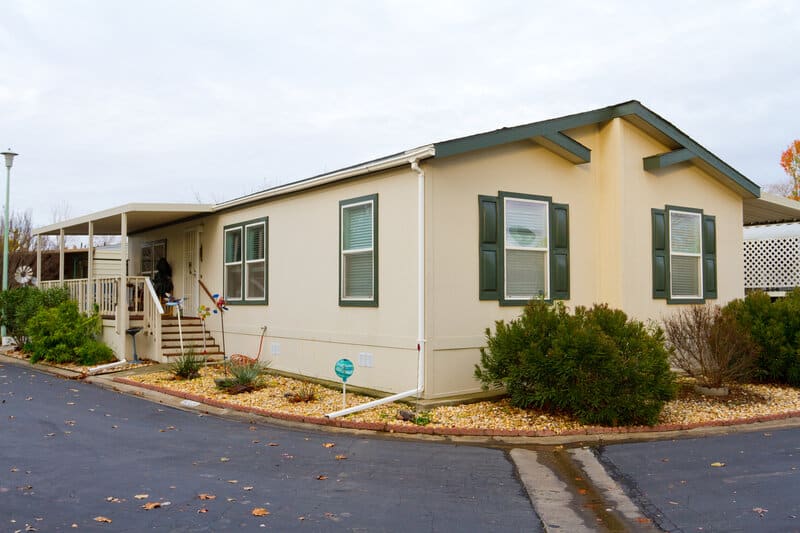
As housing prices have continued to rise across the Bay Area, we’re seeing more clients buying land and installing mobile homes as a more affordable living option. This is a smart move, but remember that mobile homes require annual inspections and maintenance like any other home.
Roof maintenance is essential for any home, but mobile homes require an even more attentive eye. Mobile homes are particularly susceptible to water leaks.
5 Common Mobile Home Roof Issues
Here are five common mobile home roofing issues and how to prevent them.
Poorly maintained roofs
It’s easy to get behind on home maintenance, but doing so puts your home at risk. The roof is your home’s most significant protection from high winds and rain. Routine inspections are essential to make sure the roof is in good shape and to repair any red flag issues before they get worse and lead to costly or irreparable damage.
Your mobile home manufacturer provides clear instructions on maintaining the building’s roof. This includes things like:
- Regular roof inspections at least once, and preferably twice per year
- Clearing debris from the roof ASAP
- Repairing any roof issues as soon as you notice them to prevent long-term or more serious water damage
- Keeping the roof free of algae, mildew, or mold
- Cleaning gutters and downspouts at least once per year, upon any signs of clogging or overflowing, or in between major storms.
Establishing a connection with a local, licensed roofing contractor, preferably one with mobile home roofing experience, is the best way to ensure your mobile home roof has access to routine maintenance.
Flat mobile home roof issues
Most mobile homes are built with one of three roofing styles: bowstring, flat, or pitched. We recommend ruling out flat or bowstring styles if you haven’t purchased a mobile home yet. They are the most prone to trouble. Bowstring roofs drain water fairly well but are not structurally designed to hold much weight. Between storm, fire, and earthquake potential – your roof could experience heavy loads if tree limbs, power lines, or other debris come down. Its roof design and materials should stand up to the task.
We wrote an entire article on the pros and cons of flat roofs, but the cons outweigh the pros in our opinion. Flat roofs are prone to water collection in a climate as moist as ours. It’s never good for water to sit on a roof for any length of time, so we recommend purchasing a mobile home with a pitched roof instead.
Flashing issues
Mobile homes are prefab by nature. After they’re manufactured, they’re transported and installed onsite. In the meantime, any poorly installed components, or components damaged along the way, cannot perform as designed once the home is attached to its foundation.
If the unit flashing is damaged, misaligned, or just plain outdated, it will leak. This leads to water accumulation virtually anywhere in the home, from ceiling leaks to water pooling or signs of moisture at the bottom of exterior walls. Roof flashing and gutters work together to draw water off the roof and away from a building’s foundation. Where there’s a problem with one, there may be a problem with the other.
Outdated roofing materials (or overdue roof repairs)
Mobile home roofs are the same as roofs on a traditional home, and the life expectancy depends on the type of roofing materials used. Most mobile homes have asphalt shingles or metal roofs. When well-maintained, these roofs last for multiple decades. If you’ve purchased a mobile home that is new to you, see if you can learn more about the previous owner’s roof maintenance history.
A roof inspection is the best way to determine the status of your mobile home’s roof, and we’ll let you know whether it needs any repairs. We can also discuss plans for replacement if the roof has outlasted its lifetime.
Poor ventilation, insulation, or humidity control
Roofs are part of the whole-home structure, so their performance depends on other structural systems. If the home lacks proper ventilation, and adequate insulation, or has humidity control issues, the roof suffers. In most cases, these issues lead to condensation that sits on roofing materials, creating consistent moisture damage. Moisture control problems also put your home at risk for mold/mildew infestations.
This shouldn’t be a problem in mobile homes built within the past five to 10 years. However, licensed contractors should inspect older homes to determine whether they’re up to date and performing as they should be. The good news is that updating any or all of these systems improves whole-home comfort and humidity levels – while also providing energy-efficient benefits.
Prevent Mobile Home Roofing Issues With An Inspection
Not sure about the condition of your mobile home roof? Schedule an inspection with Pacific Coast Roofing, or give us a call at (510) 912-5454 to get expert answers to your roofing questions or concerns. Our family-owned roofing business has built and maintained high-quality, long-lasting roofs for Bay Area homeowners for over 20 years. We’d love to add you to our client family.

